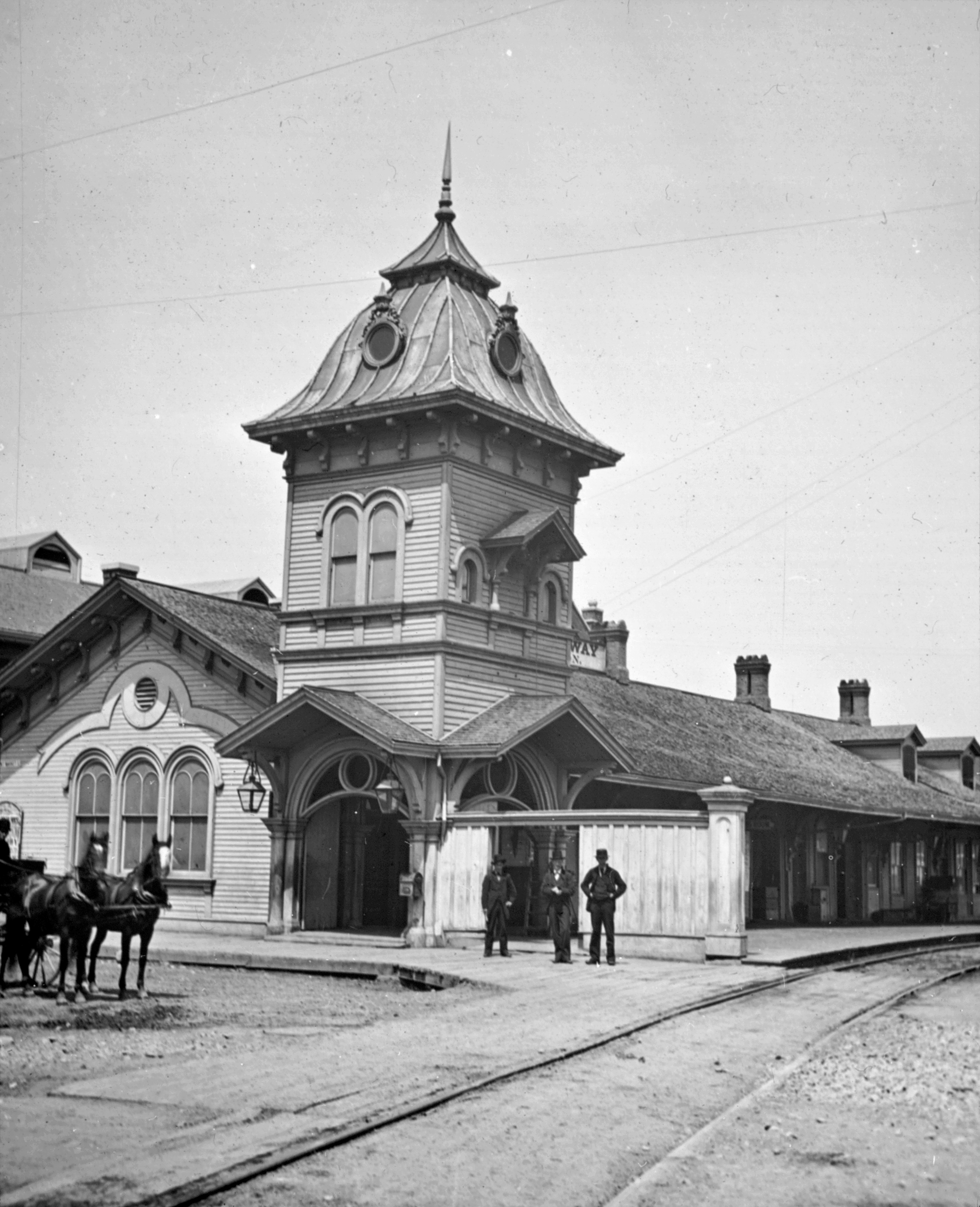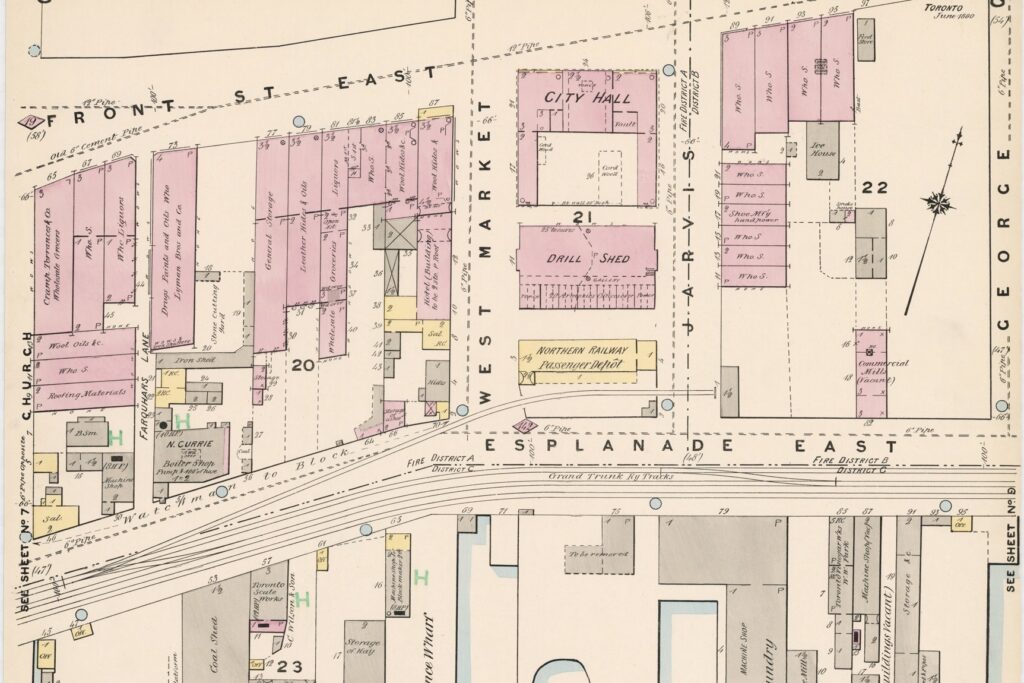Summary
The Northern Railway of Canada built its City Hall Station in 1867 along the north side of The Esplanade, occupying the space between Lower Jarvis Street and Market Street. It was named for its proximity to Toronto’s second City Hall (1845 – 1899), though the primary reason for its construction was to make the shipment of farm products to the market square near Front Street and Jarvis more convenient compared to the Northern Railway’s older passenger and freight facilities at Spadina Avenue. The first train arrived at City Hall Station on June 10th, 1867. In attendance at the new station’s opening ceremony was none other than John A. Macdonald, who would become the first Prime Minister of the Dominion of Canada three weeks later. Like many other passenger stations built by the Northern Railway the City Hall Station was made primarily from wood, though its design deviated from the norm and included many architectural embellishments not seen on the Northern Railway’s earlier stations in the city. It included many ornate details and its defining feature was a large tower with a mansard roof. The Northern Railway declined to become a tenant of the Grand Trunk Railway’s new Union Station in 1873, though its trains going to or from City Hall Station would stop adjacent to Union Station as a convenience for passengers connecting with other trains.
The station would change hands multiple times over the course of the next two decades. The Northern Railway of Canada merged with the Hamilton & North-Western Railway into the Northern & North Western Railway in 1879. Less than a decade later, the Northern & North Western was itself merged into the much larger Grand Trunk Railway in 1888. Due to persistent overcrowding at the 1873 Union Station the City Hall Station was kept open by the Grand Trunk to help manage overflow. It became the first and last stop for the Grand Trunk’s suburban trains between Toronto and Mimico, and the station remained in this purpose until it was finally closed and torn down in 1894. This occurred simultaneously with an expansion of Union Station and the surrounding rail corridor which was expected to at least partially solve the overcrowding issues. The entire block occupied by the City Hall Station and Toronto’s second City Hall was used to build the St. Lawrence Market in 1899, which still operates in the same location to this day. The tracks were gradually removed from The Esplanade between the 1930’s and 1980’s and there remains very little trace of railway activity in this area.
Condensed Station Info:
| Location: | Served By: | Current State: | Date Built: | Date Demolished: |
| The Esplanade & Jarvis Street | NRC (1867 – 1879) N&NW (1879 – 1888) GTR (1888 – 1894) | Demolished | 1867 | 1894 |



